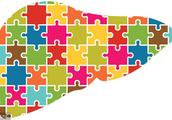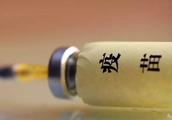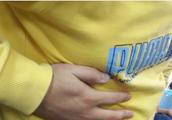


对稳定冠心病患者,支架不可能预防心肌梗死,也不能降低总死亡率。
如能戒烟限酒,认真用好他汀,阿司匹林等药物,参加心脏康复,可长治久安。
冠状动脉CT发现70%-80%左右狭窄,无症状,应做运动心电图负荷试验(运动平板或踏车)。如运动试验未见心肌缺血,或有缺血,但不重,不要被过度支架。
目前,临床上一个极大的问题是信息不对称。医院心脏科病历上把很多无胸痛症状的患者也诊断成“不稳定性心绞痛”;本是稳定的心绞痛,也故意写成“不稳定心绞痛”。把一些焦虑抑郁的胸痛表现也诊为“不稳定性心绞痛”,成为一种令人气愤的“集体撒谎”,误导诱导许多不需做支架,或做支架弊大于利的患者,花大钱买风险。
【纽约时报2018年2月12日刊文】
心脏支架对于大多数稳定冠心病患者无效,但仍然被广泛使用
当我的孩子们小时候,如果他们抱怨疼痛,我有时会在他们身上抹些润肤霜,告诉他们“奶油”会有帮助。通常情况下,安慰剂效应出奇有效。润肤霜很便宜,几乎没有副作用,它实现了预期的效果,这是个完美的解决方案。
其他一些疗法也有安慰剂效应,让人感觉更好。但大多情况下这是有危险的,我们必须权衡利弊。
许多美国人由于心肌缺血、缺氧而引起胸部疼痛,这就是所谓的心绞痛。几十年来,最常见的治疗方法之一是在心脏供血冠状动脉置入网状支架。支架使血管开通,增加血液流向心脏,从理论上解决了这个问题。
插入这些支架的心脏病专家发现他们的患者感觉好些了。他们似乎更健康。许多人认为这些支架可以防止心肌梗死甚至死亡。经皮冠状动脉介入治疗植入支架非常普遍。
2007年发表在《新英格兰医学杂志》的一项随机对照试验,主要研究终点是心肌梗死和死亡。研究人员收集了近2300名有严重冠状动脉疾病并诊断有心肌缺血的患者,随机将他们分成置入支架合并药物治疗组或单纯药物治疗组。随访患者多年。结果呢?支架在预防这些患者不良后果方面没有任何区别。
这让人难以置信。因此随后进行了更多的研究。
2012,研究者汇集并在JAMA Internal Medicine杂志发布了一项荟萃分析,三项针对心肌梗死后稳定患者进行的研究,另五项评价尚未发生过心肌梗死,而有稳定心绞痛或心肌缺血的患者。荟萃分析显示,支架对预防稳定冠心病患者心肌梗死或死亡没有效果。
然而,许多心脏病专家认为,支架改善了患者的疼痛,改善了他们的生活质量。即使没有达到预期,即降低患者为中心的预后结果,但对那些植入支架的患者能改善生活。
问题是,很难知道支架是否导致疼痛缓解,或者是否是安慰剂效应。毕竟,通过植入手术这一流程,安慰剂效应非常明显。因此需要一个假的控制流程试验,这个过程可使患者不清楚他们是否置入了支架。
许多医生反对这种研究。他们认为,大量心脏病学专家的经验已证明了支架的效果,因此让随机分组的一些患者不接受支架是不道德的。另一些人认为,将患者暴露在假手术中是错误的,因为这会使他们受到潜在的伤害而毫无益处。更多持怀疑态度的观察者可能会注意到,一些医生和医院在执行这一程序时也获得了经济回报。
无论如何,这样的试验已经完成,结果在今年公布。
研究人员在英国的五个地方征集患有严重冠心病的患者,并将其随机分为两组。所有患者按要求服用一段时间药物。然后,第一组患者接受了支架。第二组患者麻醉镇静至少15分钟,但没有置入支架。
六周后,所有患者在运动平板进行测试。运动会使患者感到疼痛,而运动负荷监测是检查心绞痛的常用方法。在测试时,患者和心脏病专家都不知道(双盲)是否放置了支架。根据测试结果,他们甚至在测试后也无法得出结论:干预组和安慰剂组之间的结果没有差别。支架甚至没有减轻疼痛。
一些值得注意的事项:所有患者在接受手术前都接受药物治疗,所以很多患者在接受支架之前都有了显著的改善。现实世界中,一些患者也许不会坚持规范频繁的医治,因此对这些患者来说,可能会受益于支架(我们尚不知道)。本研究随访时间仅为六周,因此长期效果尚不清楚。这些结果只适用于稳定型心绞痛患者。可能对有多处病变的严重患者,或药物治疗无效的患者会从支架获益。
但很多人,也许大多数患者,可能并不需要他们。这对患者和医生来说是很困难的。因为在他们的经验中,置入支架的患者得到了改善,他们似乎从手术中受益。但这种获益似乎是因为安慰剂效应,而不是来自血液流动改善的任何物理变化。研究中的患者感觉和我的孩子在擦“润肤霜”时的感觉一样好。
不同的是,润肤霜不会真的引起伤害,但是支架置入会引起。在这项研究中,即使2%的患者有重大出血事件,但要记住,每年都要植入数十万个支架。同时支架也很贵,可能增加至少10000美元的治疗费用。
支架在医疗中仍然占有一席之地,但比我们过去认为的要少得多。然而,许多医生和患者仍然会要求使用支架,指出支架会使一些人得到改善,即使这种改善来自安慰剂效应。
在这方面,支架手术并不是孤例。可能许多医疗手术的效果都未必比假手术安慰效果好。虽然我们永远不会批准那些获益不超过安慰剂效果的药物,但我们在医疗装置方面没有相同的标准。2014年,Rita Redberg在新英格兰医学杂志指出,只有1%被批准的医疗设备被要求提交临床数据的批文,而这些数据几乎都是小规模试验与有限时间的随访。以证明没有安慰剂效应的随机对照试验非常罕见。
似乎有一个强烈的观点,即我们应该更加意识到我们愿意冒什么风险,以及我们愿意为安慰剂效应付出什么。如果我们不想放弃利益,我们是否应该设计更便宜、更安全的假手术程序来达到同样的效果?这是道德的吗?难道比向那些收费五位数并把他们置于严重不良事件的风险更不道德吗?
看起来稳定的单支血管病变患者应该被告知,支架并不比假手术更好,也不比药物治疗好。有些人可能仍然选择支架,他们至少应该知道他们要付多少钱。
【原文】
Heart Stents Are Useless for Most Stable Patients. They’re Still Widely Used.
When my children were little, if they complained about aches and pains, I’d sometimes rub some moisturizer on them and tell them the “cream”would help. It often did. The placebo effect is surprisingly effective.
Moisturizer is cheap, it has almost no side effects, and it got the job done. It was a perfect solution.
Other treatments also have a placebo effect, and make people feel better. Many of these are dangerous, though, and we have to weigh the downsides against that benefit.
Lots of Americans have chest pain because of a lack of blood and oxygen reaching the heart. This is known as angina. For decades, one of the most common ways to treat this was to insert a mesh tube known as a stent into arteries supplying the heart. The stents held the vessels open and increased blood flow to the heart, theoretically fixing the problem.
Cardiologists who inserted these stents found that their patients reported feeling better. They seemed to be healthier. Many believed that these stents prevented heart attacks and maybe even death. Percutaneous coronary intervention, the procedure by which a stent can be placed, became very common.
Then in 2007, a randomized controlled trial was published in The New England Journal of Medicine. The main outcomes of interest were heart attacks and death. Researchers gathered almost 2,300 patients with significant coronary artery disease and proof of reduced blood flow to the heart. They assigned them randomly to a stent with medical therapy or to medical therapy alone.
They followed the patients for years. The result? The stents didn’t make a difference beyond medical treatment in preventing these bad outcomes.
This was hard to believe. So more such studies were conducted.
In 2012, the studies were collected in a meta-analysis in JAMA Internal Medicine. Three studies looked at patients who were stable after a heart attack. Five more examined patients who had stable angina or ischemia but had not yet had a heart attack. The meta-analysis showed that stents delivered no benefit over medical therapy for preventing heart attacks or death for patients with stable coronary artery disease.
Still, many cardiologists argued, stents improved patients’pain. It improved their quality of life. Even if we didn’t reduce the outcomes that physicians cared about, these so-called patient-centered outcomes mattered, and patients who had stents reported improvements in these domains in studies.
The problem was that it was difficult to know whether the stents were leading to pain relief, or whether it was the placebo effect. The placebo effect is very strong with respect to procedures, after all. What was needed was a trial with a sham control, a procedure that left patients unclear whether they’d had a stent placed.
Many physicians opposed such a study. They argued that the vast experience of cardiologists showed that stents worked, and therefore randomizing some patients not to receive them was unethical. Others argued that exposing patients to a sham procedure was also wrong because it left them subject to potential harm with no benefit. More skeptical observers might note that some doctors and hospitals were also financially rewarded for performing this procedure.
Regardless, such a trial was done, and the results were published this year.
Researchers gathered patients with severe coronary disease at five sites in Britain, and randomized them to one of two groups. All were given medication according to a protocol for a period of time. Then, the first group of patients received a stent. In the second, patients were kept sedated for at least 15 minutes, but no stent was placed.
Six weeks later, all the patients were tested on a treadmill. Exercise tends to bring out pain in such patients, and monitoring them while they’re under stress is a common way to check for angina. At the time of testing, neither the patient nor the cardiologist knew whether a stent had been placed. And, based on the results, they couldn’t figure it out even after testing: There was no difference in the outcomes of interest between the intervention and placebo groups. Stents didn’t appear even to relieve pain.
Some caveats: All the patients were treated rigorously with medication before getting their procedures, so many had improved significantly before getting (or not getting) a stent. Some patients in the real world won’t stick to the intensive medical therapies, so there may be a benefit from stents for those patients (we don’t know). The follow-up was only at six weeks, so longer-term outcomes aren’t known. These results also apply only to those with stable angina. There may be more of a place for stents in patients who are sicker, who have disease in more than one blood vessel, or who fail to respond to medical therapy.
But many, if not most patients, probably don’t need them. This is hard for patients and physicians to wrap their heads around because, in their experience, patients who got stents got better. They seemed to receive a benefit from the procedure. But that benefit appears to be because of the placebo effect, not any physical change from improved blood flow. The patients in the study felt better from a procedure in the same way that my children did when I rubbed moisturizer on them.
The difference is that while the moisturizer can’t really harm, stent placement can. Even in this study, 2 percent of patients had a major bleeding event. Remember that hundreds of thousands of stents are placed every year. Stents are also expensive. They can add at least $10,000 to the cost of therapy.
Stents still have a place in care, but much less of one than we used to think. Yet many physicians as well as patients will still demand them, pointing out that they lead to improvements in some people, even if that improvement is from a placebo effect.
Stents are probably not alone in this respect. It’s possible that many procedures aren’t better than shams. Although we would never approve a drug without knowing its benefits above a placebo, we don’t hold devices to the same standard. As Rita Redberg noted in The New England Journal of Medicine in 2014, only 1 percent of approved medical devices are approved by a process that requires the submission of clinical data, and that data is almost always from one small trial with limited follow-up. Randomized controlled trials are very rare. The placebo effect is not.
There seems to be a strong argument that we should be more conscious of what we are willing to risk, and what we are willing to pay, for a placebo effect. If we don’t want to give up the benefit, should we design cheaper, safer fake procedures to achieve the same results? Is that ethical? Is it more unethical than charging people five figures and putting them at risk for serious adverse events?
It surely seems reasonable that stable patients with single-vessel disease should be informed that stents work no better than fake procedures, and no better than medical therapy. Some may still choose a stent. They should at least know what they’re paying for.
原文链接:
https://www.nytimes.com/2018/02/12/upshot/heart-stents-are-useless-for-most-stable-patients-theyre-still-widely-used.html?partner=rss&emc=rss
人文医学相关链接:












